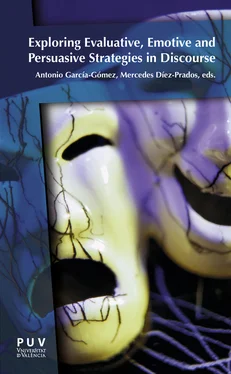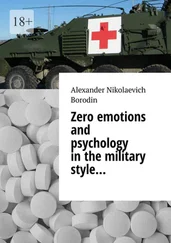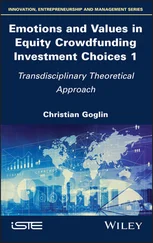MARÍA JOSÉ GARCÍA VIZCAÍNOis Associate Professor of Spanish and Director of the Graduate Certificate Program in Translation and Interpreting in Spanish at Montclair State University (MSU). She teaches Specialized Translation and Negotiation Skills in Spanish at MSU. Her current lines of research are Linguistics, Translation, and Advertising. Dr. García Vizcaíno also works in the field of Transcreation: the adaptation and recreation of both visual and textual contents taking into account the sociocultural nuances of the target audience and language of a particular market.
SILVIA MOLINA PLAZAis Senior Lecturer at the Technical University of Madrid where she is currently teaching at the Department of Applied Linguistics to Science and Technology. She has gained recognition for eighteen years of quality research. Her research has focused on the translation from English to Spanish, contrastive analysis (modality and collocations), Pragmatics and Discourse Analysis applied to different genres in numerous book chapters, articles, papers.
ROSA MUÑOZ LUNAcompleted her BA degree on English Philology at the University of Málaga (2006), and her BA degrees on Education and Psychopedagogy at the University of Salamanca (2012). During a temporary stay at the University of Exeter (England), she obtained a Master in TESOL, and from that moment onwards English teaching and discourse analysis became her fields of expertise. She is currently working as Associate Professor at the University of Málaga. She has published in JCR international journals such as Porta Linguarum, Plos One and Resla.
JOAQUÍN PRIMO-PACHECOis a PhD candidate at the University of Valencia. He holds a BA in English Philology and an MA in Language and Literature Research from the same university. His several research interests span across different fields, including discourse analysis, film and television studies, corpus linguistics, gender and queer studies, literary stylistics and TEFL.

Exploring Evaluative, Emotive and Persuasive Strategies in Discourse: Introductory Remarks
ANTONIO GARCÍA-GÓMEZ & MERCEDES DÍEZ-PRADOS
Universidad de Alcalá
In the present volume, we delve into three discourse functions that have deemed of great interest for scholars through time: evaluation, emotion and persuasion. Our present intent is to move one step forward and see how they are intimately intertwined. Within the evaluative function of language, rational and emotional persuasion plays an important role; as Bamford (2007: 138) states, “evaluation is very persuasive”. Similarly, types of discourse such as political and advertising, which are eminently persuasive (Cockcroft et al. 2013) because their main function is to produce a change in the addressor’s beliefs (Pullman, 2013: xx), are overloaded with evaluation and strong emotions. More specifically, persuasion in these types of discourse is manifested and implemented via evaluative and emotive devices, since they provide a positive self-evaluation and negative other-evaluation or depreciation (see, for example, Cabrejas-Peñuelas and Díez-Prados, 2014). These devices aim to persuade the audience to “buy” what they are trying to sell, be it a product or an idea, in contrast with what their opponents have to offer. It may even be claimed that evaluation is intrinsically persuasive, since the mere manifestation of appraisal involves a statement of the addresser’s beliefs with the explicit or implicit desire to make the addressee share his/her valuation (i.e. to persuade him/her), regardless of the actual effect produced.
The description of the language functions of evaluation, emotion and persuasion will be carried out in this volume through the multimodal analysis of real texts and discursive situations in which English or Spanish is spoken, without forgetting the so-called e-communication, given the great impact of these new technologies on the present global society. The papers in the present volume explore the discursive manifestations of evaluation, emotion and persuasion and the extent to which these three phenomena can be conceived separately or whether each of them is the consequence or effect of the other(s). The purpose of persuasion is to influence somehow on the reader’s value system (García-Gómez 2007) and what the papers in this volume explore is how this is carried out by using evaluative and emotive discourse. In addition to this, the present volume addresses those three language functions and their interplay in multiple discourse genres (i.e. business pitches, political debates, media discourse, fiction, social networks) that represent multiple discursive situations.
Authors depart from the premise that an evaluative process underlies every persuasive act, in the sense that trying to persuade (“the art of getting what you want”, Lakhani, 2005) implies attempting to change somebody else’s beliefs, points of view or convictions. In so doing, the persuader is presenting his/her reality as a more valid option than that of the receptor and, thus, is inviting him/her to reconsider his/her worldview. In addition, rational thoughts have been highly valued in the study of persuasive communication in the literature; however, persuasion also goes hand-in-hand with the way(s) words appeal to the audience’s emotions.
There is no doubt that rational and emotional persuasion is at the heart of argumentative strategies such as the resort to the principles of authority, novelty, modernity, exclusiveness or internationalization (Santiago Guervós, 2012) and is manifested at all linguistic levels: phonetics (e.g. intonation, stress), morphology (e.g. suffixes, pronouns), syntax (e.g. evasive answers, rhetorical questions), lexis (e.g. argot, lexical reiteration, colloquialisms, evaluative terms) or pragmatics (e.g. face saving acts as a means of politeness, polyphony, certain speech acts). Political discourse, for example, uses varied linguistic and discursive strategies such as cohesion (e.g. DíezPrados and Cabrejas-Peñuelas, 2012, and Cabrejas-Peñuelas and Díez-Prados, 2013), metaphor (e.g. Díez-Prados, 2016) or appraisal (e.g. Cabrejas-Peñuelas and Díez-Prados, 2014) with an ultimate persuasive goal.
The focus on how specific linguistic evaluative and emotive choices affect persuasive discourse is our first major point in the papers collected for the volume. Lakoff (1982: 28) classifies persuasion as “the attempt or intention of one participant to change the behaviour, feelings, intentions or viewpoint of another by communicative means”. Whether a speaker’s illocutionary act is recognised as one of persuasion is not guaranteed and depends on the hearer understanding it as such.
Part I of the volume compiles a group of papers with a crosslinguistic Spanish/English approach. This work constitutes a conscious effort to show case studies in which engagement, linguistic choices and multimodality are exploited as evaluative, emotive and persuasive strategies. Within a discourse pragmatic approach, these papers attempt to clarify and somehow systematize the study of these strategies in different text-types.
‘Comparing Engagement in Non-fictional Texts: An English-Spanish Contrastive Study of Argumentative and Expository Texts from a Parallel Corpus’ by Marta Begoña Carretero-Lapeyre. Following the Appraisal framework, Carretero explores the role of Engagement in argumentative and expository texts from MULTINOT, an English-Spanish parallel corpus. The Engagement realisations were submitted to quantitative analysis, whose main results are: 1) Distributional differences among subcategories were found in the English and Spanish texts, which hints that Engagement devices were not always faithfully translated; 2) The comparison of the original texts in both languages shows distributional differences in the more delicate categories of Engagement but not in its main categories; 3) Distributional dissimilarities were found between the argumentative and expository texts, largely due to the different main purposes of both types. These results together provide evidence of the close relationship between persuasion and evaluation in language.
Читать дальше













